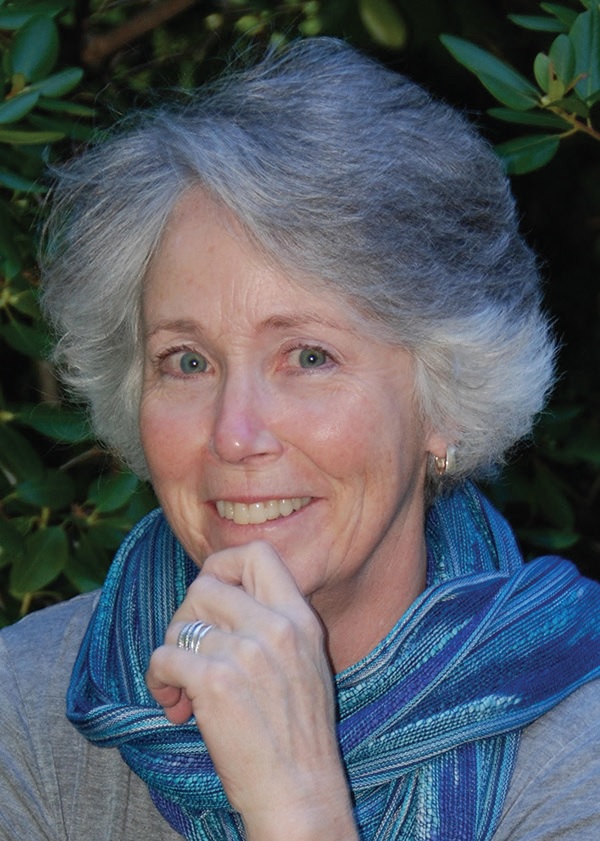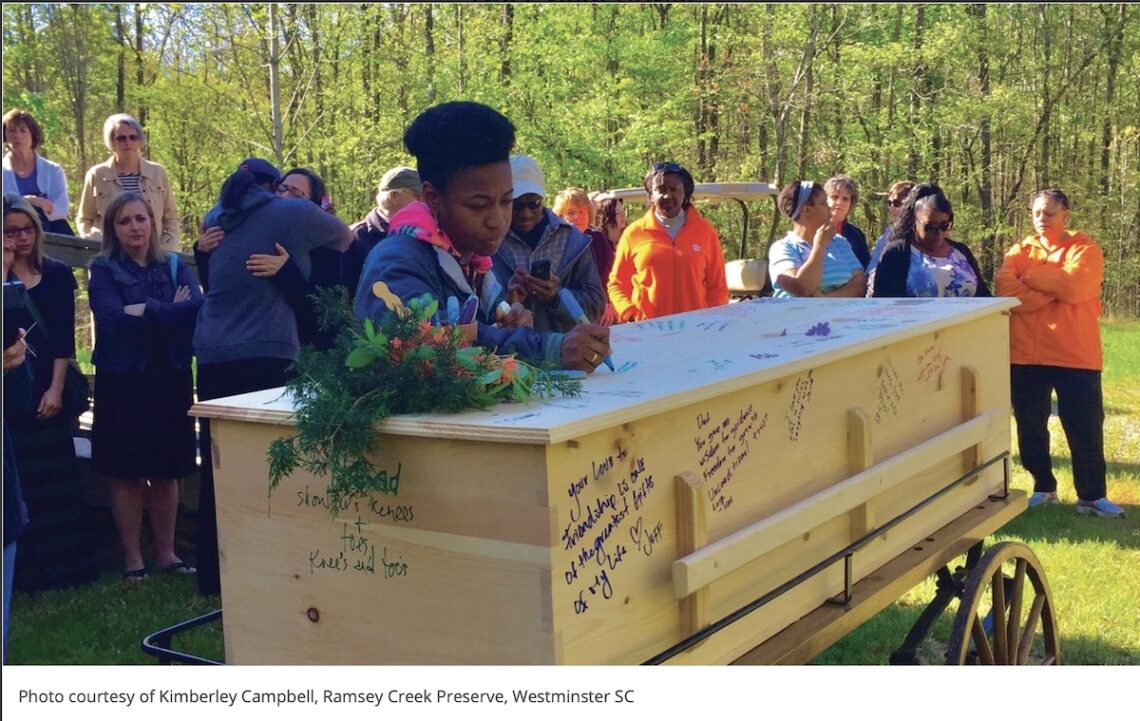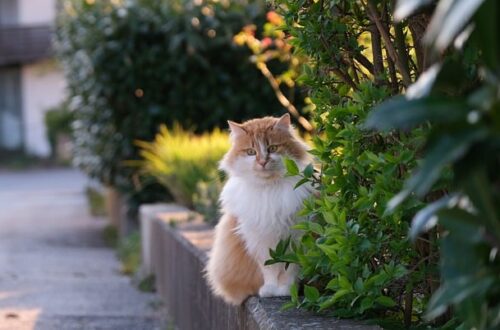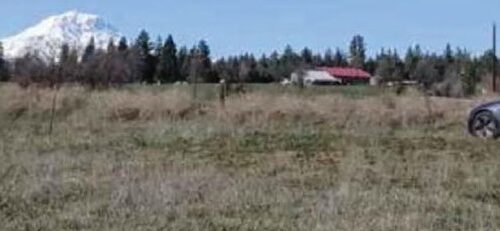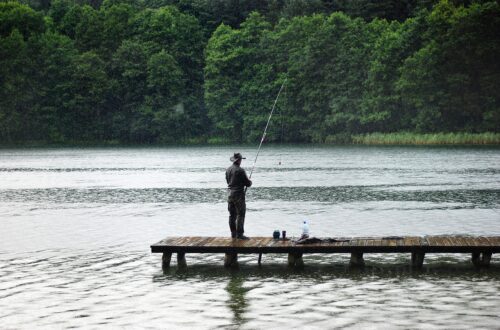Green burial is a way of caring for the dead with the minimal environmental impact that aids in the conservation of natural resources, reduction of carbon emissions, protection of worker health, and the restoration and/or preservation of habitat.
The standard conventional funeral, complete with embalming and burial in a lawn cemetery, is fraught with health hazards. In addition, it requires the permanent installation of non-biodegradable vaults around non-biodegradable caskets.
Embalmers have an eight times higher risk of contracting blood diseases such as leukemia, and three times higher risk of amyotrophic lateral sclerosis (ALS), while groundskeepers are more than twice as likely to develop Chronic Obstructive Pulmonary Disease (COPD); both are exposed routinely to chemicals known to cause cancer and neurological diseases. And each year, the US buries over 1.6 million tons of reinforced concrete – roughly 1-2 tons per vault, plus imported steel from China and exotic woods from rainforests in South America, creating a significant total of carbon emissions.
The differences between green & standard burials are in the non-invasive, eco-friendly methods used to care for the body before & during burial, not in the ways we honor our dead.
The differences between green and lawn burials are in the non-invasive, eco-friendly methods used to care for the body before and during burial, not how we honor our dead. In fact, rituals are on the rise as families find the natural setting of green burials conducive to both traditional and spontaneous celebrations of life and acknowledgment of their loss.
Green burial cemeteries have many shared practices regardless of their type or governing structure. For instance, they limit the use of electrical or gas-powered equipment (mowers and weed whackers), fertilizers, pesticides, and herbicides. Green cemeteries are more likely to use natural grave markers such as local stones and have native plants that encourage habitat for birds, bees, and animals.
Offering educational and community-based, life-affirming activities on the land, such as family picnics, weddings, baptisms, wildflower recognition outings, birdwatching, yoga, and academic research, these cemeteries are spaces for the living, not just the dead.
Anyone might want this option. Green burials appeal to anyone who desires an exit that is in line with the way they have lived their life, what they valued and what they believe to be authentic to their experience, and that might include a heightened sense of environmental responsibility. The green burial tent is wide enough for all without sacrificing environmental integrity or cultural identity.
Green cemetery plot pricing varies, dependent on the going market price in any particular area, essentially the same as any real estate transaction. However, natural burial cemeteries expand that definition by highlighting the opportunity to be buried on the property where it aligns with sustainability management plans and according to weather restrictions, such as winter burial. Green burial cemeteries are also paying closer attention to social justice access issues by structuring fee schedules to avoid elitism and level the field for all to experience environmental equality. In practical terms, it may not cost more or less to manage a green cemetery; it is more about using the funds differently to fulfill the cemetery’s sustainable ecology management plan.
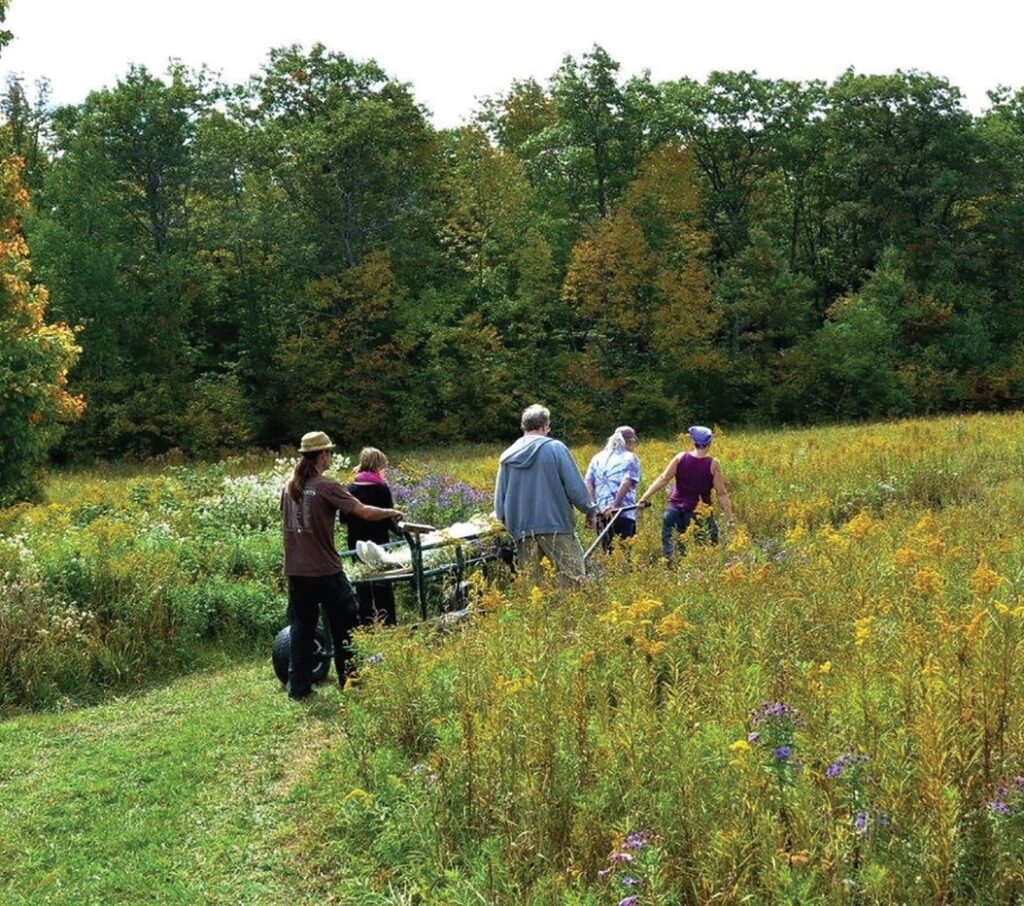
For more info: www.greenburialcouncil.org and www.conservationburialalliance.org
Lee Webster is a published author, conservation burial advocate, and nationally recognized public speaker on funeral reform. She has served in major leadership positions of the Green Burial Council, Conservation Burial Alliance, National Home Funeral Alliance, National End-of-Life Doula Alliance, and is the director of New Hampshire Funeral Resources & Education. She is co-creator of the Funerals.org Partnership home funeral website development company with Holly Pruett of Portland (see OregonFuneral.org for Oregonspecific home funeral and green burial information). Her latest collaborative book, The Future of the Corpse: Our Changing Places and Perceptions of the Dead and Mourning, is set to publish in the fall of 2021.
